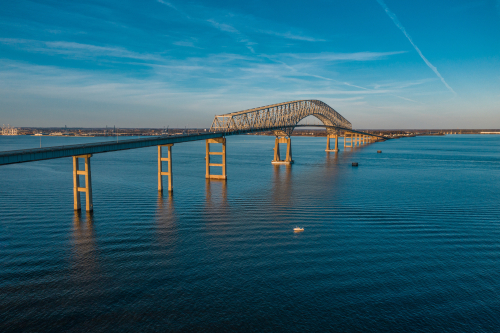Officials Confirm Hazardous Materials Spilled From Crashed Baltimore Ship

A cargo ship that struck the Francis Scott Key bridge in Baltimore, Maryland, marked the latest in a string of recent U.S. transportation-related disasters.
In addition to causing the pivotal bridge to collapse, cutting off access to a major port and killing several people in the process, a recent update by a National Transportation Safety Board official indicated that there is another potential danger associated with the crash.
Just over a year after a train derailment in East Palestine, Ohio, coated the ground with toxic waste, NTSB Chair Jennifer Homendy confirmed that hazardous material was being transported on the ship.
Officials were “able to identify 56 containers of hazardous materials” aboard the vessel, she said, which amounted to “764 tons of hazardous materials, mostly corrosives, flammables” and “miscellaneous hazardous materials.”
Confirming that at least some of the matter fell under the category of “class-nine hazardous materials,” Homendy explained that classification includes items such as lithium-ion batteries.
During her news briefing on Wednesday, she said that “some of the hazmat containers were breached” and a telltale “sheen” could be seen on the water near where the collision occurred.
As for the potential impact to the supply chain caused by the closure of the Port of Baltimore, officials stress the importance of resuming operations as soon as possible given its status as the nation’s busiest port for vehicle imports and exports.
Nevertheless, economist Ryan Sweet downplayed concerns about widespread economic repercussions.
“The collapse of the Francis Scott Key Bridge in Maryland is another reminder of the U.S. vulnerability to supply-chain shocks, but this event will have greater economic implications for the Baltimore economy than nationally,” he said. “We don’t anticipate that the disruptions to trade or transportation will be visible in U.S. [gross domestic product], and the implications for inflation are minimal.”
Other ports along the East Coast are stepping up their efforts to fill the need while the access is limited to the Port of Baltimore.
Joe Harris, a spokesperson for the Port of Virginia in Norfolk, explained: “We’re ready to help. We have ample capacity to absorb any surge in container traffic.”
























